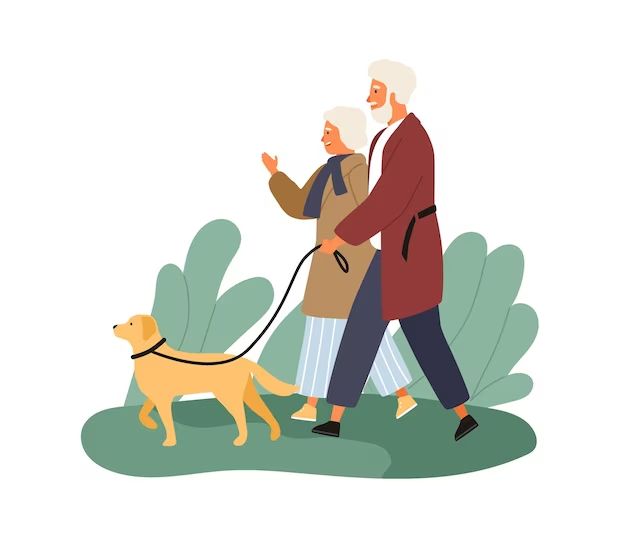Introduction
It can be difficult to know when a dog is reaching the end of its life. However, understanding changes in a dog’s behavior, activity levels, and health can help owners prepare for their beloved pet’s final days. Recognizing common signs that a dog is dying allows owners to provide comfort, pain management, and the most loving home environment possible at this sensitive time.
Knowing when a dog is nearing end of life is important for several reasons. It allows owners to spend meaningful final days together through gentle play, tactile interaction, and quality time. Understanding typical end-of-life symptoms helps owners make decisions about palliative veterinary care to maximize comfort. Observing changes also guides choices about euthanasia to minimize suffering when a dog’s quality of life declines past an acceptable point. While each dog is unique, familiarity with common signs like appetite changes, breathing changes, and low energy levels can help owners support their dogs fully through the dying process.
Changes in Energy Levels

As dogs near the end of their life, it’s common for them to experience a noticeable decrease in energy levels and an increase in lethargy and sleep. Dogs that were previously very active may start spending more time resting and sleeping during the day. They often show less interest and enthusiasm for exercise, play, and other activities they once enjoyed. This increased lethargy is often one of the more obvious initial signs that a dog is declining in health.
According to one source, “Lethargy, of course, is not necessarily a sign of impending death in dogs and is not pathognomonic of something necessarily dire, but it can be associated with disease states that can potentially lead to death if unresolved” (source). The lethargy is often a result of the dog’s body conserving energy as it struggles with illness or simply aging. This lack of energy and increased sleep can progress over time as the dog’s health worsens.
As a dog’s health declines, they may start sleeping for 20 hours a day or more. They often lose interest in walks or playing fetch, two activities that were once enjoyable. Overall, expect your dog to seem more sluggish, with less pep in their step as their energy wanes near end of life.
Changes in Eating Habits

As dogs near the end of their life, their eating habits often change significantly. One of the most common changes is a decreased appetite. According to CareCredit, “Loss of appetite in dogs is often one of the first signs that your pup may be ill…In some cases, your dog’s loss of appetite may be accompanied by other gastrointestinal symptoms, like vomiting and diarrhea.”
Agape Pet Services explains that “The closer your dog is to dying, the less of an appetite they will have. If your dog is not eating at all, there is a good chance they are close to death.” A complete loss of appetite is a clear sign a dog is nearing the end of its life.
However, Daily Paws notes that in some cases elderly dogs may develop an increased appetite: “An increased appetite, especially for nonfood items, may signal organ failure or endocrine issues.” If a senior dog suddenly starts eating significantly more, it could be a sign of an underlying health issue.
Overall, monitoring your dog’s food intake is important as they age. A decreased appetite likely signals the end is nearing, while a sudden increase could indicate a health problem that should be addressed. Consult your veterinarian if you notice significant changes in your elderly dog’s eating habits.
Changes in Elimination Habits

One of the common signs that a dog is nearing the end of life is loss of bowel and bladder control, leading to accidents around the house. As dogs age, their muscles can weaken, making it difficult for them to hold their urine and feces. Their kidneys may also start to fail, causing incontinence.
According to the article “Dog behaviour before death: 10 signs your dog is dying” on Goodbyegoodboy.com.au, incontinence is common in senior dogs and often worsens as they get closer to death. The muscles relax to the point that urine and stool can pass out involuntarily. You may notice your dog being unable to control their peeing or pooping, even if they are let outside frequently.
As noted in the PetMD article “Signs a Dog is Dying” (https://www.petmd.com/dog/general-health/signs-dog-dying), dogs may be too weak to get up and go outside, leading to more indoor accidents. If your previously house-trained dog starts having frequent accidents around the house, it could be a sign of their declining health and approaching end of life. While frustrating, try to be patient and understanding during this difficult transition.

Changes in Weight
Weight loss is very common in senior dogs and will start well before the end of life. Part of this is a normal aspect of the aging process: as dogs age, they lose muscle mass and their metabolism slows down, resulting in a decreased appetite and weight loss.
However, significant weight loss can also be a sign that a dog is dying. Dogs losing weight rapidly over the course of weeks or a couple months is a red flag. According to Leesville Animal Hospital, dogs may lose up to 30% of their body weight in the last weeks or months before they pass away.
This extreme weight loss is the result of muscle wasting and cachexia – a condition characterized by weakness and loss of muscle mass. It indicates that the dog’s body is beginning to shut down. As death nears, the dog will begin to metabolize its own muscles and fat for energy. This causes rapid and significant weight loss that is unavoidable, even with interventions like appetite stimulants.
If you notice your senior dog rapidly dropping weight with no explanation, it is a clear sign to begin end-of-life care and prepare for your dog’s eventual passing.
Changes in Breathing

As a dog nears the end of life, you may notice changes in their breathing patterns. One common sign is faster or irregular breathing. A dying dog may start panting or breathing rapidly even when at rest. This is because the dog is trying to take in more oxygen as their body starts shutting down. According to Agape Pet Services, breathing may become shallow and labored as death approaches.
You may also notice periods of panting as the dog tries to breathe in more air and cool down their body temperature. Panting is a common response to pain, nausea, confusion or anxiety in dogs nearing death. As dog owner and blogger Caren Gampel writes on PetMD, “Dogs may start panting even while at rest, develop a cough, or have increased difficulty drawing a normal breath.” These breathing changes are often a sign that a dog is beginning the dying process.
Behavioral Changes
When a dog is nearing the end of his life, he may begin to exhibit behavioral changes. Some of the most common behaviors seen in old or dying dogs include:
– Increased clinginess or need for affection – dying dogs may seek to be close to or cling to their owners more often, wanting to be constantly reassured by your presence. They may follow you from room to room, lay closer to you, or want more petting and affection than usual. These signs of behavior in dogs before death are their way of wanting comfort and to spend quality time with you. (Source)
– Confusion or wandering – dog behavior before death can include basic confusion over commands they used to know or locations in the home that once were familiar. They may appear lost, pace, wander into corners, or get stuck behind furniture, unable to figure out how to reverse out. Disorientation and changes in awareness of surroundings are often seen as dogs succumb to cognitive dysfunction syndrome or canine Alzheimer’s. If your dog seems confused, it’s important to keep him in a safe, confined space. (Source)
Changes in Interactions
One of the most common behavioral changes pet owners notice as their dog nears the end of life is less interest in socializing or playing with other pets and people. A dying dog will often start to withdraw and isolate themselves, spending more time alone. They are conserving energy and may not have the strength or desire for social interaction. Where they once loved to play with toys or go for walks, an elderly or sick dog will likely lose interest in these activities as their health declines.
You may also notice changes in your dog’s responsiveness. They may seem distant or disconnected at times, not responding as quickly to their name being called or commands given. Your dog may not react to things that once got their attention, like the sound of the leash coming out or the treat bag being opened. This decreased responsiveness can be a sign your dog is withdrawing as their condition progresses. While upsetting, understand your dog is not purposefully ignoring you, but rather going through the natural process of slowing down as their life is coming to an end.
Preparing for End of Life
Making your dog as comfortable as possible during their final days is incredibly important. Providing pain management through medication prescribed by your vet can help ease any discomfort. You may also want to make adjustments around the home like providing bedding in easy to access areas, helping your dog get around more easily, and hand feeding them if they are having trouble eating on their own.
Take time in the final days and weeks to cherish your bond and create lasting memories. Gently stroking your dog, speaking to them, looking through old photos together, taking them for a ride in the car, or just sitting together can provide comfort. Give your dog any favorite foods or treats within reason. Capture paw prints or clips of fur for keepsakes. And take lots of pictures and videos to document your final days together.
When it comes time for euthanasia, take time to say a loving goodbye. Talk to your dog calmly with reassurance, give them pets, and stay with them during the procedure if possible. Let them know how much they mean to you, and that you’ll never forget them. It may help to bring familiar bedding or a favorite toy. Afterwards, take time to grieve this profound loss.
When to Euthanize
Making the difficult decision to euthanize your dog is based on assessing your dog’s quality of life. Some signs that it may be time to euthanize include:
Your dog is in constant pain that cannot be managed with medication. According to the American Humane, “Euthanasia may be the only humane option when the dog’s pain is severe, cannot be controlled, and overwhelming suffering persists despite all efforts.”1
Your dog has lost interest in nearly all joyful activities. If your dog no longer gets excited about things that used to bring them happiness, like walks, playtime, or treats, their quality of life has diminished.
Your dog can no longer control their bodily functions. Incontinence or the inability to stand or move on their own are signs your dog’s condition has progressed.
Your dog is extremely anxious and restless. If they pace constantly, whimper, or seem stressed most of the time, they may be ready for euthanasia.
Making the final decision requires honestly evaluating your dog’s current state versus their previous quality of life. Consider speaking to your veterinarian, who can provide guidance on assessing your dog’s condition. While certainly difficult, choosing euthanasia can sometimes be the last act of love we give our pets.